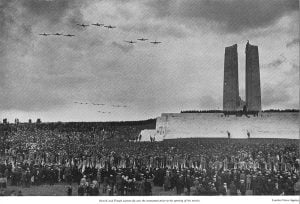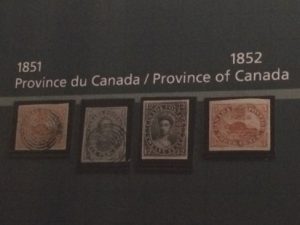
History
Vimy Canadian Memorial photo essay
A trip back in time to the memorial’s dedication
- 485 words
- 2 minutes
This article is over 5 years old and may contain outdated information.
History

As spring unfolds across the country in the coming weeks, Canadians will have an opportunity to honour the passing of a renowned Canadian horticulturalist and geneticist by marvelling at the blooms of her labour emerging in their gardens.
Felicitas J. Svejda, a legendary rose breeder, died January 19, 2016 at the age of 95.
Harry McGee, a retired National Research Council physicist, told the Ottawa Citizen, “Canada has lost a national treasure. She is valued highly all around the circumpolar countries, a ring right around the Earth.”
For almost 25 years until her retirement in 1985, Svejda led the rose breeding program at Ottawa’s Central Experimental Farm. Her crowning achievement: developing a breed of super-hardy roses that could survive Canadian winters without the protection required by foreign breeds of the plant.
Ann Hemsley Parsons wrote about Svejda’s creations in the August/September 1987 issue of Canadian Geographic soon after they were introduced, drawn as much to the geographical nature of Svejda’s work as to the names she bestowed on her tough roses.
Known as the Canadian Explorer roses, each was named after a famous explorer, including Hudson, Frobisher, Baffin, Cabot, Champlain, Mackenzie, Franklin and Thompson.
“By working with the natural genetic propensities of the rose itself, she has overcome the climatic restrictions on northern rose growing,” wrote Parsons of Svejda’s work.
By 1987 nurseries across the country and around the globe were carrying the Explorer series. One, the John Cabot, nabbed the silver medal of England’s Royal National Rose Society in 1985, with the judges honouring it not for its hardiness (which was not a criteria), but rather for, as Parsons wrote, “the brilliance of its blooms, its strong upright qualities and its resistance to disease.”
To this day, the hardy Explorer rose line remains on offer at Canadian nurseries, and they are found in most public gardens – a fitting legacy of both their namesakes and their maker.
Are you passionate about Canadian geography?
You can support Canadian Geographic in 3 ways:

History
A trip back in time to the memorial’s dedication

History
A look back at the early years of the 350-year-old institution that once claimed a vast portion of the globe

History
A new permanent gallery near the Nation's capital lets visitors revisit Canadian history through the country's postage.The Canadian Stamp Collection has a new home on the…

Exploration
The men and women that have become part of Canada’s space team